5 effective techniques that will help you reduce your website’s bounce rate

Your bounce rate is the percentage of visitors who land on your website and then leave before viewing other pages. This is a rate you want to keep low, otherwise Google will assume your content isn’t helpful to visitors and lower your ranking on the search results. Additionally, if people leave your website quickly after landing on it, they’re probably not making purchases.
In this article, we’re going to outline how you can lower your bounce rate and ultimately drive more conversions through your website. Let’s get started.
Highlight the USPs and benefits of your services above the fold
A unique selling point (USP) is what makes your business better than the competition! So, before outlining the features of your products or services, you want to show your website visitors their benefits and convince them that you’ll be able to improve your customers’ lives.
People don’t like a hard sell, so you’ll get a lot more conversions if you can first tell people how you’ll work to help them. This can keep your bounce rate low, as people will want to learn more and could be more inclined to buy from you after imagining the benefits of doing so.
Let’s take a look at a few examples of businesses that use this strategy well.

At Loganix, we outline the USPs of our blog writing services right at the top of our service page. As you can see in the image above, we highlight that our services are provided by university-educated writers who are great at creating informative and educational content. This gives website visitors an idea of what we can offer them and shows they can trust us to deliver what they need.
Taking this approach will help website visitors to think about how you can improve their lives, which will make them want to browse your website. This will then lower your bounce rate!
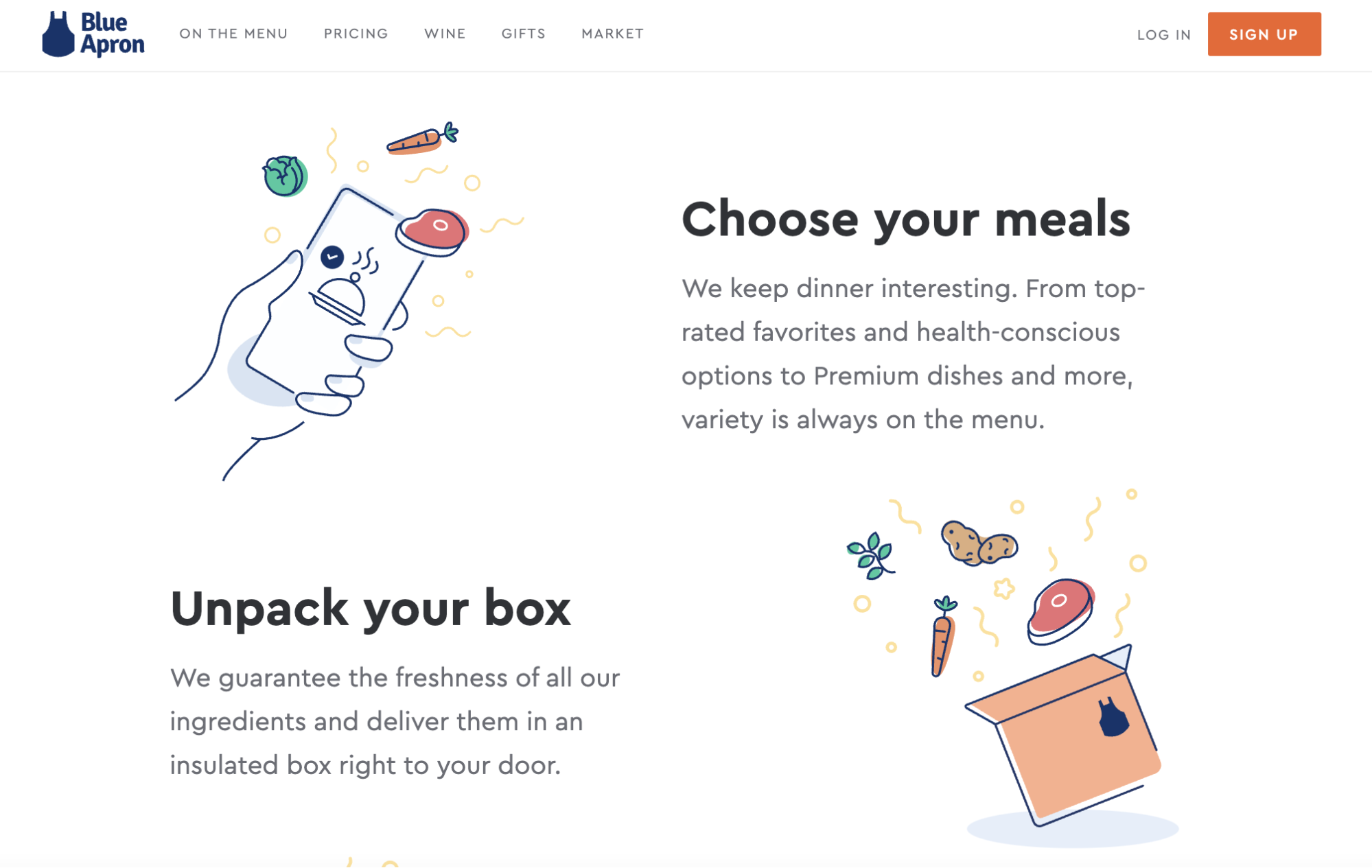
Blue Apron, a meal kit subscription service, highlights their benefits before their product’s features, as well. On their homepage, they highlight how their services work — a user gets to pick their own meals, unpack their fresh box, and simply start cooking! By showing off how simple and easy their services are, Blue Apron highlights how customers can truly benefit. This makes it more likely that website visitors will want to stay on the website and further investigate, which will lower their bounce rate!
Highlight how your services work on your website, and focus on how they can help your customers. This will engage your audience and keep them from leaving your website, helping you to reduce your bounce rate.
Help people to take the next step straight away
When people land on your eCommerce store’s product or service page, you want to make it as easy as possible for them to take the next step. This will increase your chances of making a sale and also help you reduce your bounce rate.
You can make it simple for people to take the next step in a few different ways. For instance, you can:
-
Offer a clear call to action (CTA) that tells the user what to do next
-
Provide a sophisticated search feature that directs users to the products or services they need
-
Display your contact information in various places so people can get in touch
Let’s take a look at a few examples of businesses that make it easy for people to take the next step for inspiration.
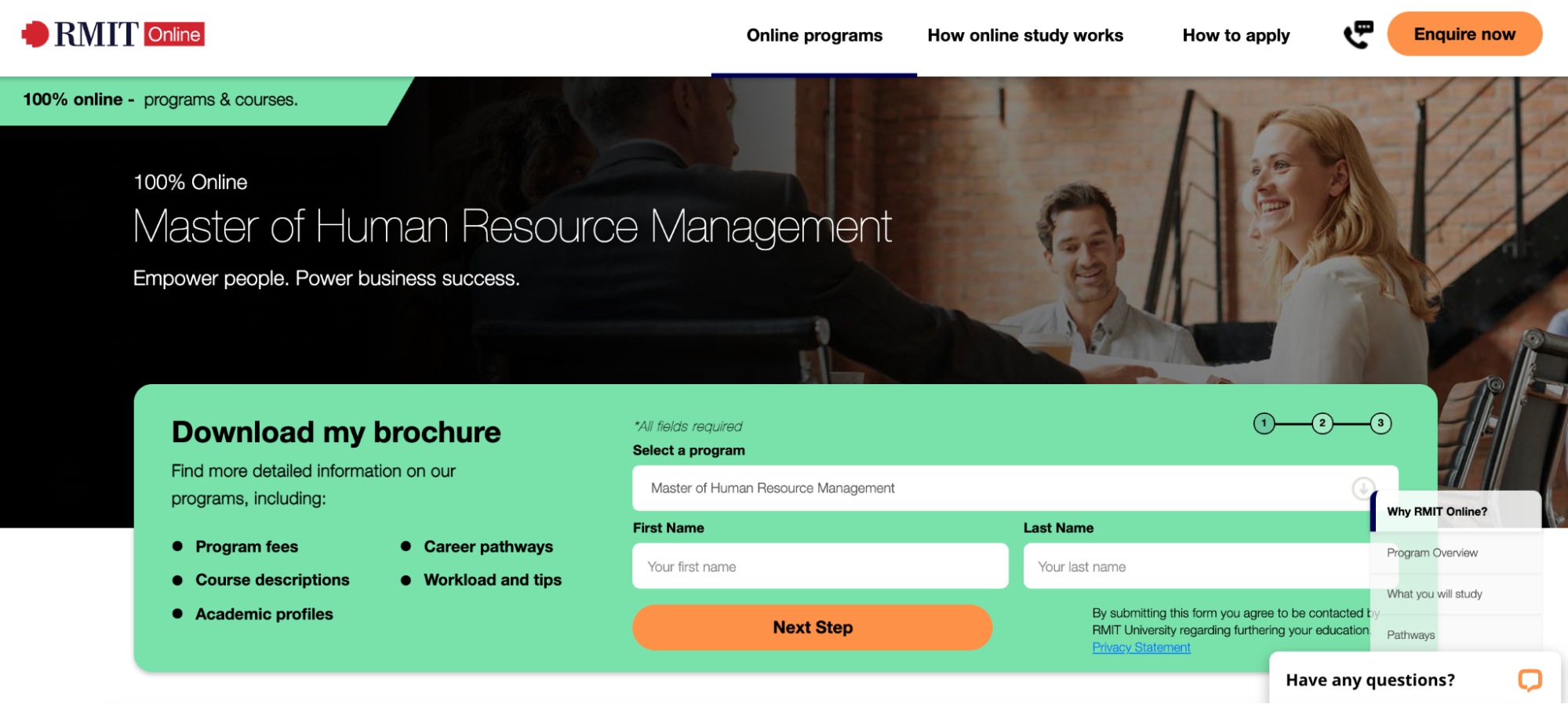
RMIT Online, an online university based in Australia, makes it easy for people to get in touch from their page for their Master of Human Resource Management program. As you can see above, RMIT Online has a form that a website visitor can fill out in order to take the next step and get a brochure. By making this step clear and easy to access, RMIT Online makes it more likely that people will continue investigating their programs, reducing their bounce rate.
Consider offering a similar form on your website. If you ask for a small amount of information to help people take the next step with your business, website visitors will find it easy to get started. This will make them more likely to stay engaged and reduce your bounce rate.
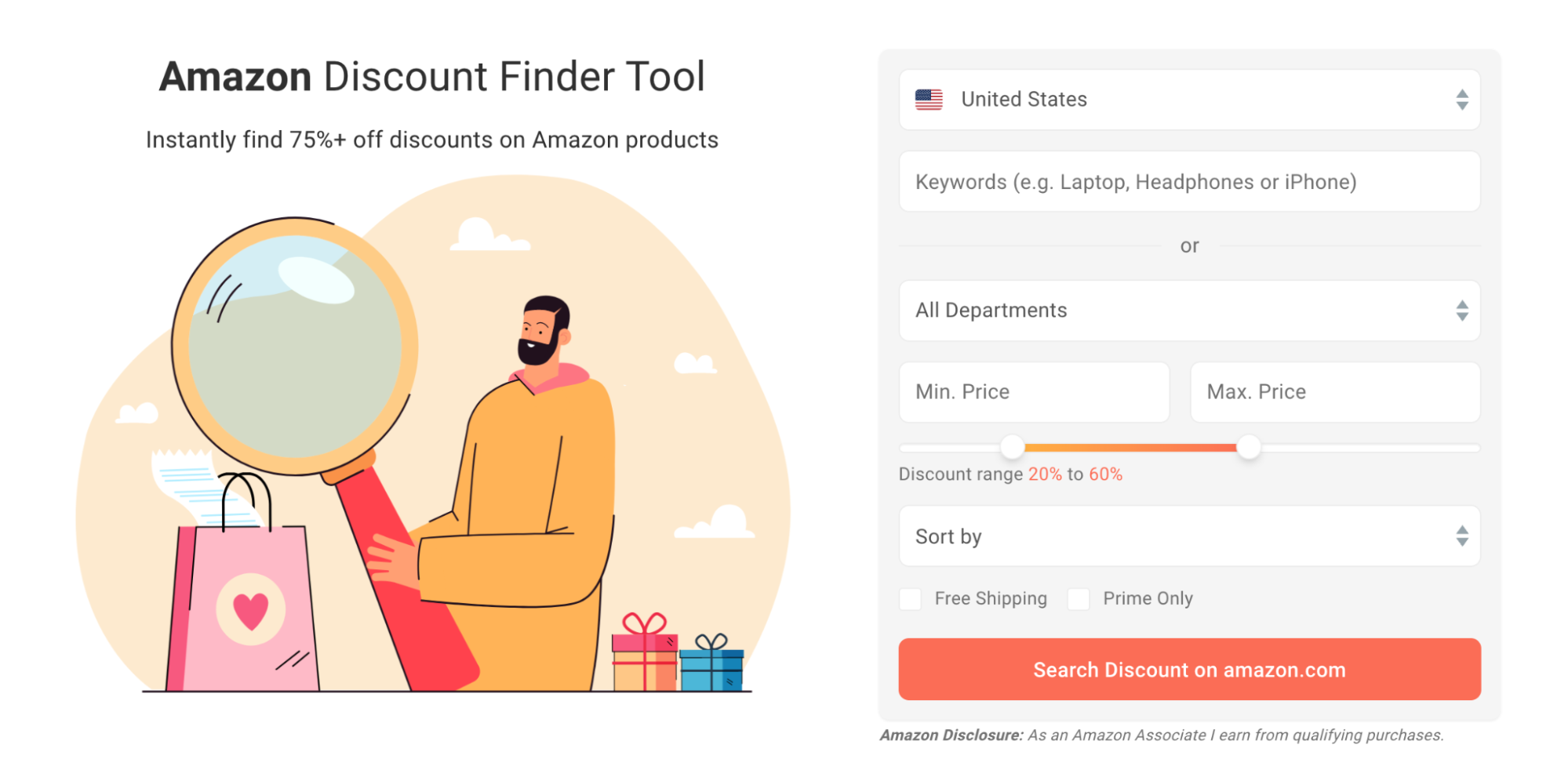
DontPayFull, an online coupon finder, has a very helpful tool on their website. As you can see above, their Amazon discount finder requires only a small amount of information and is straightforward to use. A user just needs to plug in some keywords and their price range, then DontPayFull will show them relevant discounted products they’re likely to be interested in. Because the tool is so simple to use, it’s likely to be helpful to website visitors and make it more likely that they’ll take the next step. This can help lower DontPayFull’s bounce rate!
Consider offering a tool on your website that can direct people to the products and services they need. This will help people quickly and easily take the next step, so they stay on your website longer. This will help to lower your bounce rate!
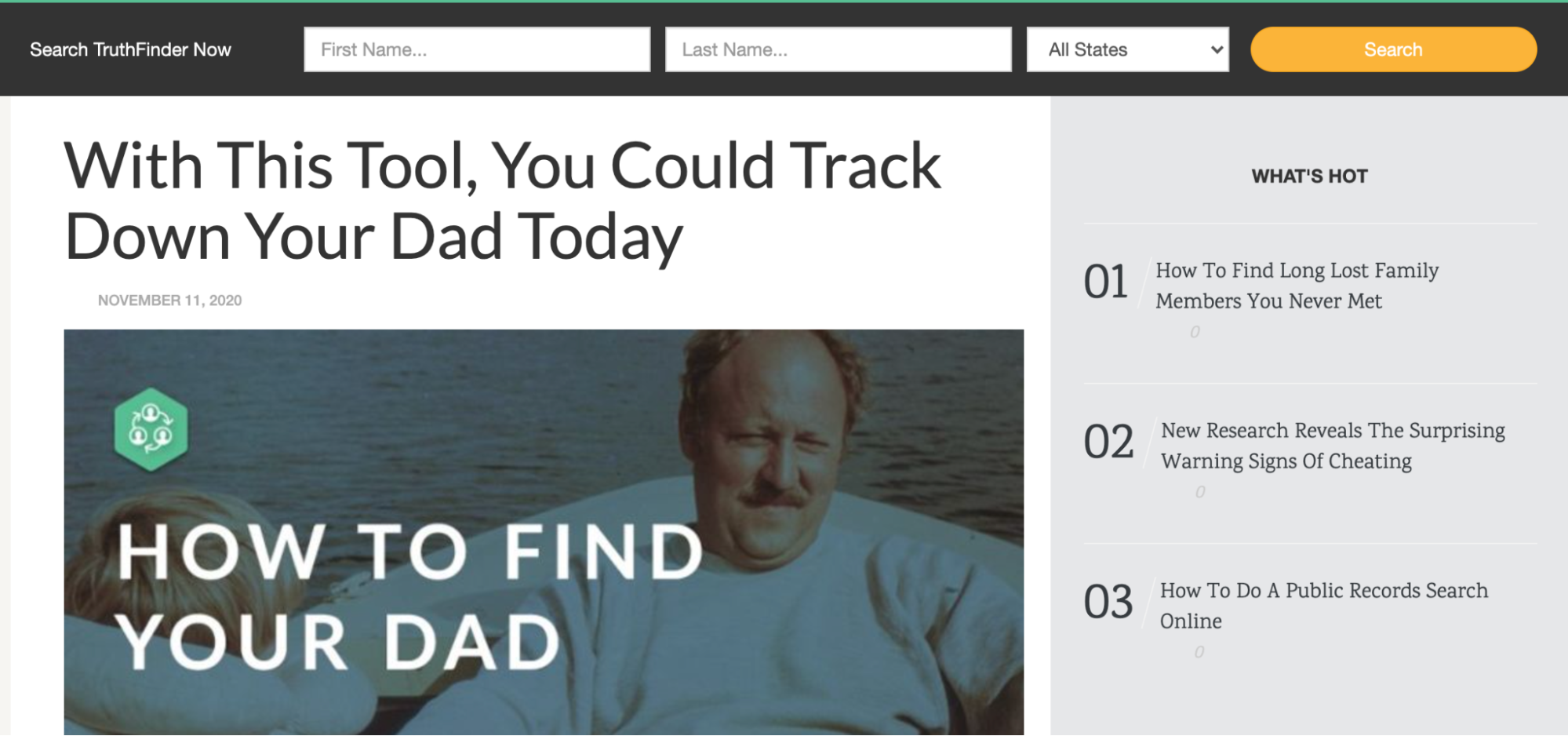
TruthFinder, an online records search company, makes it easy for people to take the next step from their blog, too. They have an article titled “How to Find Your Dad” and, at the top of the page, there is a simple search bar where a user can plug in a person’s name in order to find them. This makes it very easy for people to get started in finding their lost relative, making them more likely to stay on the website.
If you publish blog content, be sure to make it easy for people to get started with your business from those pages, as well. Consider adding the likes of your contact information or a search tool to keep people engaged and get them to take the next step. This will help you lower your bounce rate.
Make sure your website is responsive
It’s important that your website displays properly on any device. This means you need a responsive website design — if you have web pages that look great on all devices, people will spend more time on your site. This will help you improve the user experience and keep your bounce rate low.
Here are a few tips for creating a responsive website:
-
Create a mobile-friendly website that works on both iPhone and Android devices (use Google’s mobile-friendly test for help with this).
-
Make sure your site has a fast loading speed (try to keep it under 2 seconds).
-
Remove any dead links from your website
If you can create a responsive website, you’ll ensure that website visitors have a positive experience. This will encourage them to browse your website, reducing your bounce rate.
Conduct some A/B testing
A/B testing will help you to determine which elements of your website convince people to click and convert, or contribute to a lower bounce rate. A/B testing lets you show one piece of content to one half of your audience and another version to the other half. You can then compare the results and determine what works better.
To work out what is impacting your bounce rate, you might want to change elements like the phrasing or colors of your CTAs, where your contact information is located on the page, or which images you use. If you run a few different A/B tests, you can determine what design elements and marketing design assets lower your bounce rate and what you should stick with as a result.
Use an A/B testing tool in order to run your experiment. Your web host might have one of these, or you can use Google’s.
Use strong visuals to catch a visitor’s eye
Reducing your eCommerce website’s bounce rate is all about catching and keeping your website visitors’ attention. Strong visuals can help keep people engaged on your website and encourage them to click around, reducing your bounce rate!
When choosing website imagery, keep your audience’s needs in mind. If you’re trying to help them with a problem, you might use images of sad people who look like they need your assistance, for example. Or, if you sell toys or games, colorful and cheery images are a great choice.
Let’s take a look at a few examples of businesses that have great website imagery for inspiration.

American International University, a higher education institution in Kuwait, has great imagery on the web page for its film production program. As you can see above, there are pictures of cameras filming and students at work — this type of imagery can get people excited about their field of study and keep them on the website longer. As a result, this will help American International University lower their website’s bounce rate!
On your website, use imagery that shows people what they can expect from your products and services. This will help get people excited about your products or services and keep them on the website longer.
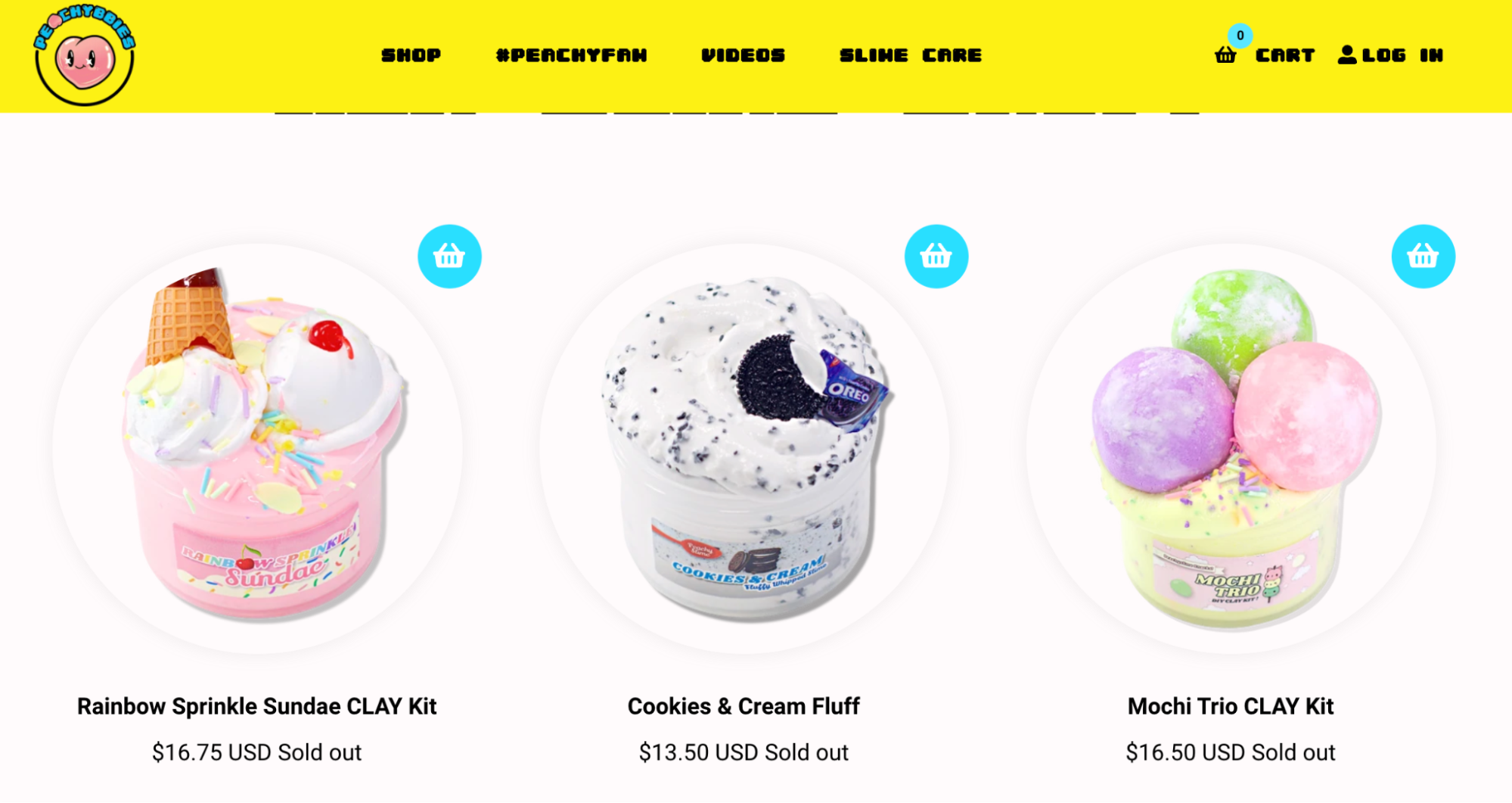
PeachyBbies Slime Shop, a slime manufacturer, also has great imagery on its homepage. As you can see above, they have images of some of their different slime products. As a toy manufacturer, PeachyBbies is all about having fun, these products are exciting, tasty-sounding, and colorful. With this product imagery, PeachyBbies can get people excited about their products, which will keep visitors clicking around the website and lower their bounce rate!
Showcase images of your products on your website! This can help get people excited about using them and make them more likely to click around your store, which will lower your bounce rate!
Summary
Lowering your website’s bounce rate is very important for running a successful online business! In this article, we outlined how you can lower yours using great imagery, A/B testing, and more.
